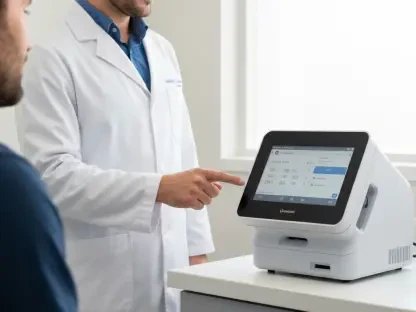In today’s rapidly advancing digital age, the integration of telehealth into the healthcare ecosystem has revolutionized how medical services are delivered worldwide. This seismic shift not only broadens access to essential healthcare services but also fundamentally redefines patient-doctor interactions. With telehealth technology, patients can now connect with healthcare providers through video calls, messages, or phone conversations, effectively removing geographical barriers and reducing unnecessary travel. This approach meets the growing demand for convenient and timely healthcare, addressing challenges surrounding access, affordability, and efficiency. Telehealth technology has begun to reshape global healthcare landscapes, transforming inefficiencies into opportunities for growth and improvement in patient care.
As telehealth becomes more ingrained in healthcare systems, technological advancements continue to drive the sector’s growth. From AI-powered diagnostic tools to the integration of wearable health devices, innovation fuels enhancements in patient care, providing round-the-clock access to specialists in fields like dermatology, cardiology, and mental health. The burgeoning online doctor consultation market stands as a testament to telehealth’s impact, with the sector valued at an impressive USD 68.23 billion just this year and projected to continue its meteoric rise with a 26.10% growth rate. This surge highlights the transformation occurring as telehealth services expand and technological solutions become more sophisticated, offering unprecedented healthcare access and efficiency enhancements.
The Growth and Potential of AI in Telehealth
The incorporation of artificial intelligence within telehealth platforms has marked a significant turning point, improving accuracy, efficiency, and patient satisfaction. AI-powered diagnostics and triage systems streamline the symptom-checking process, delivering tailored health advice and expediting consultation times. These systems can predict potential health issues by analyzing a patient’s history and symptoms, providing doctors with invaluable insights that enhance decision-making. Chronic disease management platforms, which utilize AI technology to monitor patient data over time, have also emerged, offering subscription-based plans for managing conditions such as diabetes and hypertension. These platforms often integrate wearable devices and remote monitoring, ensuring continuous, personalized care, thus solidifying telehealth’s role in managing long-term health conditions.
Furthermore, digital mental health services have gained traction, particularly in the wake of increased awareness surrounding mental health issues and the impact of global crises like the COVID-19 pandemic. Incorporating AI and telehealth platforms streamlines access to mental health support through digital therapy sessions, psychiatric consultations, and wellness tools. By facilitating cost-effective and scalable solutions, telehealth broadens access to mental health care while lowering the stigma traditionally associated with seeking help. The AI systems provide patients and healthcare providers with tools that focus on prevention and intervention, all while ensuring timely and confidential access to support. These advancements mark a pivotal shift toward comprehensive mental health care within the global healthcare framework.
Integration and Opportunities in Telehealth Services
The integration of telehealth services with other sectors within the healthcare ecosystem, such as health insurance and e-pharmacy, has created expanded opportunities for collaboration and innovation. Health insurance providers are increasingly working alongside telehealth platforms to offer bundled plans. These plans facilitate seamless, cashless consultations and create synergies between insurtech and telemedicine partnerships. By offering these comprehensive services, providers meet consumer demand for convenience, effectively addressing barriers related to cost and access.
Moreover, e-pharmacy and laboratory test integrations contribute to an enhanced user experience by simplifying complex healthcare processes. These platforms function as one-stop shops, providing users with ready access to doctor consultations, medications, and diagnostic tests all in one place. By streamlining this interaction, patients benefit from increased convenience and reduced waiting times, while healthcare providers gain more efficient workflows. This model not only enhances patient satisfaction but also fosters a more efficient and responsive healthcare environment. These integrations signal a move toward a more cohesive and patient-centered approach in the telehealth sector, streamlining the accessibility and delivery of healthcare services across the globe.
Instrumental Technologies Driving Telehealth
Several key technologies underlie the success of telehealth solutions, shaping how online consultations are conducted. Telemedicine platforms equipped with APIs facilitate secure video conferencing, while electronic health records (EHRs) and electronic medical records (EMRs) offer seamless access to patient histories. These records ensure consistency and interoperability across healthcare systems, aiding healthcare providers in delivering personalized and informed care. Mobile app frameworks enable the development of cross-platform applications, allowing users easy access to their healthcare information while on the go. AI and machine learning augment telehealth services by providing tools like symptom checkers and chatbots, which manage initial triage, automate appointment bookings, and streamline follow-up management.
The Internet of Things (IoT) further enhances telehealth through remote monitoring, allowing wearables to track critical health metrics like heart rate and oxygen levels. IoT devices relay real-time data to physicians, improving patient care through timely interventions. E-prescription systems that comply with regulatory standards allow doctors to send prescriptions directly to patients or pharmacies, facilitating medication acquisition without unnecessary delays. These technologies collectively drive telehealth’s expansion, creating an interconnected ecosystem that prioritizes patient-centric care by improving access, efficiency, and quality of healthcare services.
Regional Market Dynamics and Future Prospects
The landscape of telehealth adoption varies significantly across different regions, with North America currently holding the largest market share due to early technology adoption and established healthcare infrastructure. Healthcare providers and patients alike in North America have readily embraced telehealth solutions, using them to address varying healthcare needs with greater flexibility and convenience. However, Europe has positioned itself as the fastest-growing region for telehealth services, illustrating different rates of adoption driven by policy changes, technological advancements, and evolving consumer attitudes. This shift highlights the potential for rapid growth as regions adapt to changes in telehealth technology and integration.
Looking ahead, the possibilities presented by telehealth are immense, as emerging markets begin to harness the potential of these technologies. Affordable telehealth services can bridge healthcare disparities, empowering underserved communities with access to quality medical care. While the competitive landscape among telehealth providers continues to evolve, fostering innovation and creating strategies that capitalize on specific market needs will remain crucial. Telehealth stands poised to redefine global healthcare systems in profound ways through continued technological integration and broader acceptance among users. As such, telehealth embodies a promising frontier for advancing healthcare accessibility and efficiency worldwide.
Future Considerations and Summary Insights
In the rapidly evolving digital era, telehealth has transformed the healthcare landscape by redefining how services are provided globally. This significant change enhances access to vital healthcare while reshaping doctor-patient interactions. Through telehealth, patients engage with healthcare professionals via video calls, messaging, or phone calls, effectively eliminating geographical constraints and reducing unnecessary travel. This method caters to the increasing demand for convenient, timely healthcare, addressing issues of access, affordability, and efficiency. Telehealth is reimagining global healthcare, turning inefficiencies into growth opportunities and improving patient care.
As telehealth integrates more into healthcare systems, technological advancements propel its growth. Innovations like AI diagnostic tools and wearable health devices enhance patient care, offering constant access to specialists in areas such as dermatology, cardiology, and mental health. The expanding online doctor consultation market illustrates telehealth’s influence, valued at USD 68.23 billion and set to grow at 26.10%. This surge underscores the transformation as telehealth services spread, showcasing unprecedented healthcare access and efficiency.









